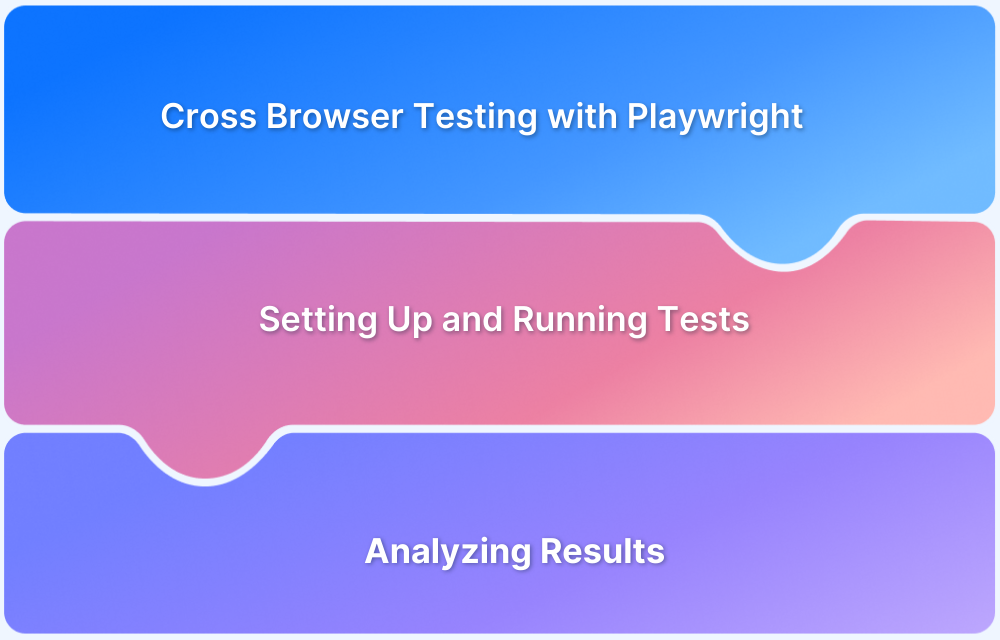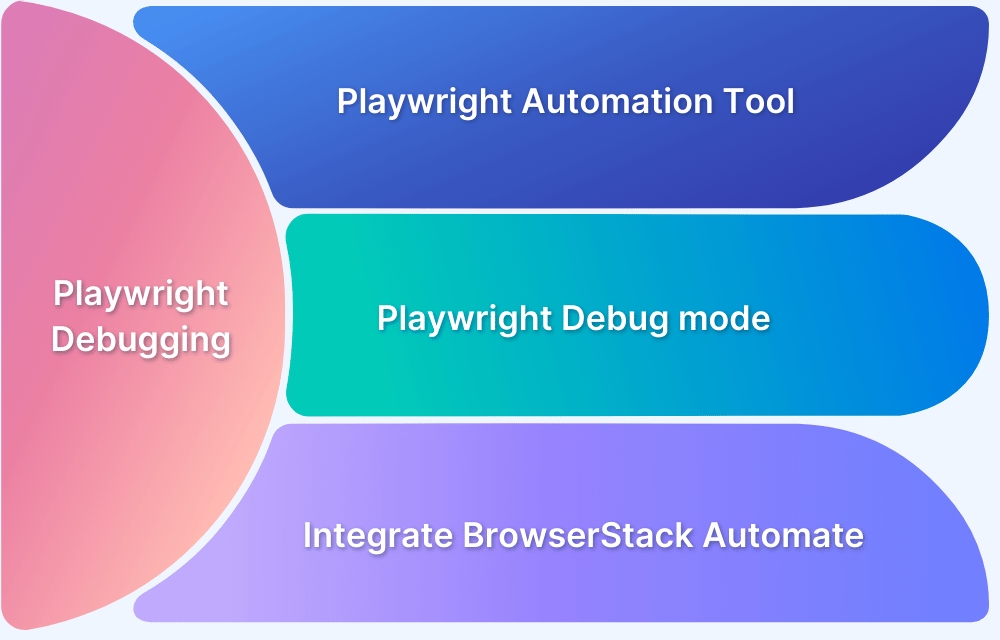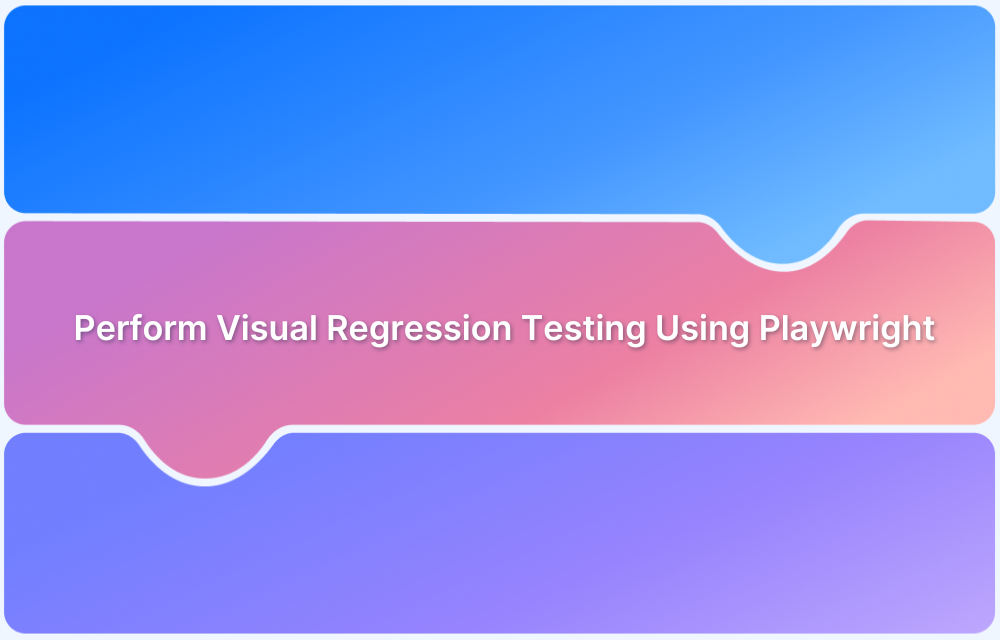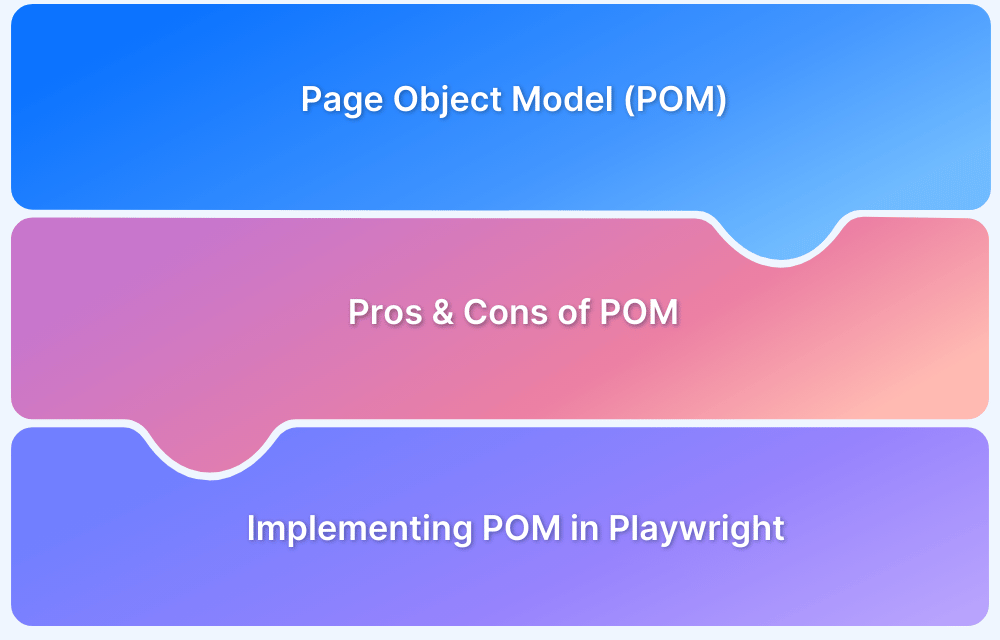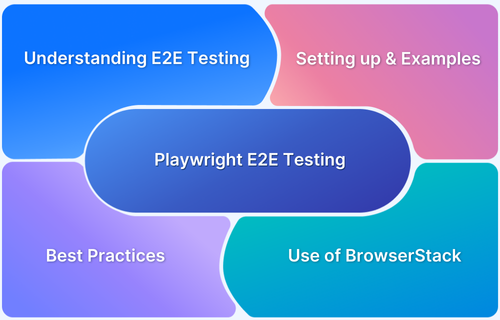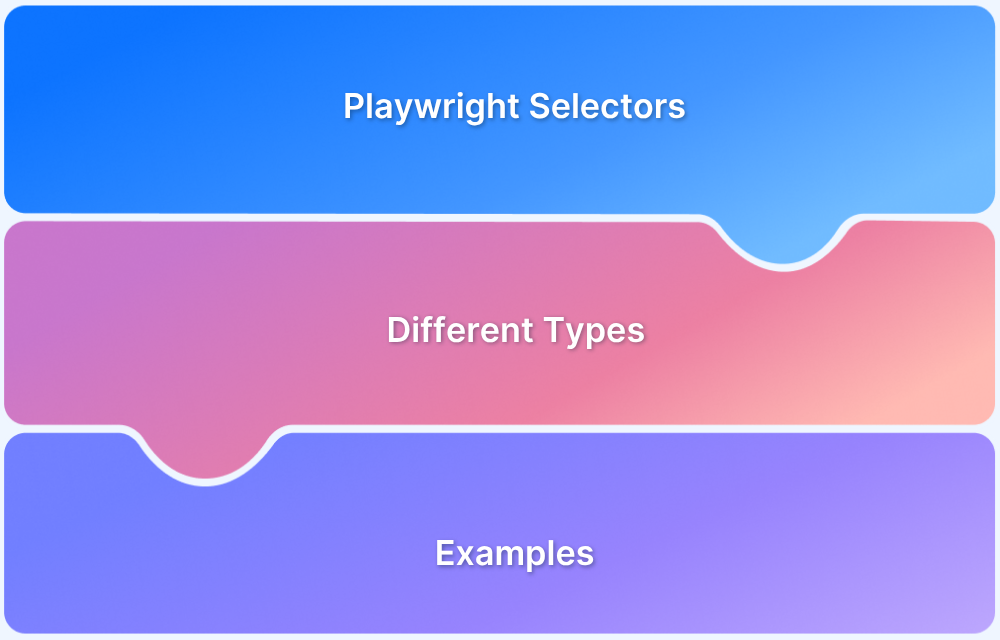Playwright for .NET empowers QA teams to build fast, reliable, and cross-browser tests using the power of C#. With enhanced parallel execution, robust debugging, and seamless CI/CD integration, it’s becoming the go-to framework for modern automation in 2026.
Overview
Playwright for .NET is Microsoft’s officially supported automation framework that enables C# developers to perform reliable, end-to-end testing across all major browsers using a unified API.
It combines Playwright’s cross-browser capabilities with the robustness of the .NET ecosystem for efficient test automation.
Key Features and Aspects of Playwright for .NET:
- Cross-browser support: Automate Chromium, Firefox, and WebKit with a single API.
- Parallel execution: Run multiple tests concurrently to reduce execution time.
- Auto-wait and smart locators: Handle dynamic elements without flaky waits.
- Built-in tracing and debugging: Capture screenshots, videos, and network traces effortlessly.
- Seamless CI/CD integration: Compatible with Azure DevOps, GitHub Actions, and other pipelines.
- Framework flexibility: Works with MSTest, NUnit, and xUnit for familiar test workflows.
- API and UI testing support: Validate both front-end behavior and backend APIs from a single
This article explores how to set up and write tests with Playwright for .NET, use advanced features, run tests efficiently at scale, and apply best practices to build a robust, future-ready automation framework in 2026.
Playwright for .NET Overview
Playwright for .NET is a modern, open-source automation framework designed for reliable end-to-end web testing using the .NET ecosystem. Key features and benefits include:
- Cross-browser support: Automate tests on Chromium, Firefox, and WebKit browsers, ensuring broad compatibility.
- Cross-platform: Run tests on Windows, Linux, and macOS, both locally and in CI environments, with support for headless or headed modes.
- Unified API: Use one consistent API for all browsers, simplifying test development and maintenance.
- Async/await support: Leverage C# asynchronous programming patterns for efficient, non-blocking test execution.
- Auto-waiting: Playwright automatically waits for elements to be ready before interacting, reducing flaky tests caused by timing issues.
- Resilient web-first assertions: Assertions retry automatically until conditions are met, improving test stability on dynamic web applications.
- Multi-context testing: Create isolated browser contexts within a single browser instance to simulate multiple users and sessions.
- Parallel test execution: Run tests in parallel across CPU cores to speed up test suites.
- Support for popular test frameworks: Integrates seamlessly with MSTest, NUnit, and xUnit.
- Advanced element handling: Works with frames, pop-ups, Shadow DOM, and dynamic content via a powerful Locator API.
- Comprehensive debugging: Capture traces, screenshots, videos, and logs to diagnose flaky or failing tests.
- Real browser input simulation: Uses trusted events (mouse, keyboard actions) indistinguishable from real user interactions.
Playwright for .NET empowers developers to build fast, reliable, and scalable automated tests that mirror real user behavior with minimal flakiness, supporting modern web applications’ complexity and dynamic nature.
Setting Up Your Playwright .NET Environment
Setting up Playwright for .NET is straightforward and involves a few key steps to get your testing environment ready for development:
1. Prerequisites
- Install the latest .NET SDK compatible with your operating system.
- Use a supported IDE such as Visual Studio or Visual Studio Code for an optimal development experience.
- Ensure you have network connectivity to download Playwright packages and browser binaries.
2. Install Playwright .NET Package
Use the .NET CLI to add the Playwright package to your project:
dotnet add package Microsoft.Playwright
3. Install Browser Binaries
After adding the package, run the Playwright CLI command to download necessary browser engines:
playwright install
This installs Chromium, Firefox, and WebKit browsers for cross-browser testing.
5. Create Your First Project
Initialize a new .NET test project (e.g., xUnit):
dotnet new xunit -n PlaywrightTests
Add Playwright as a dependency inside your test project.
6. Write Your First Playwright Test
Use async/await patterns in C# to create a basic test that launches a browser, navigates to a page, interacts with elements, and asserts expected behavior.
7. Run Tests Locally and in CI
- Tests can be run from the command line using dotnet test.
- Integrate with CI/CD pipelines (Azure DevOps, GitHub Actions, Jenkins) to automate test execution on code pushes.
8. Optional: Debugging and Tracing
Enable Playwright tracing and debugging tools to capture detailed logs, screenshots, and videos for diagnosing test failures.
Following these steps sets up a robust, ready-to-use Playwright .NET environment tailored for developing fast, reliable, and cross-browser automated tests.’#139;
Writing Tests with Playwright .NET
Writing tests with Playwright .NET allows developers to automate user interactions and verify web application behavior effectively. Key aspects include:
Basic Test Structure
Playwright .NET tests are written as asynchronous methods in C#, using the async and await keywords. A typical test involves launching the browser, navigating to a web page, performing user-like interactions, and asserting expected results such as page titles or element visibility.
Using Locators
Playwright offers a powerful Locator API that lets you find and interact with elements through CSS selectors, text, roles, and other strategies. This ensures tests are more resilient to DOM changes and supports complex queries for reliable element handling.
Assertions
Assertions in Playwright are made using the built-in Expect API, which includes automatic waiting and retries until conditions are met. This reduces flaky tests by ensuring elements are ready before verification, such as checking visibility, text content, or page URL.
Handling Navigation and Pop-ups
Tests can handle page navigations, iframe content, modal dialogs, and new browser tabs seamlessly, allowing simulation of complex user workflows.
Integration with Test Frameworks
Playwright integrates with MSTest, NUnit, and xUnit frameworks, providing attributes like [Test], [SetUp], and [TearDown] to structure tests and lifecycle hooks, which help in preparing and cleaning up resources efficiently.
Example
[Fact]
public async Task BasicTest()
{
await Page.GotoAsync(“https://playwright.dev”);
await Expect(Page).ToHaveTitleAsync(new Regex(“Playwright”));
await Page.GetByRole(AriaRole.Link, new() { Name = “Get started” }).ClickAsync();
await Expect(Page.GetByRole(AriaRole.Heading, new() { Name = “Installation” })).ToBeVisibleAsync();
}
These structured elements make Playwright .NET tests clear, maintainable, and robust, perfectly aligning with modern web application testing needs.
Advanced Features and Techniques
Advanced Features and Techniques in Playwright for .NET provide powerful capabilities that allow testers to build sophisticated and reliable test suites.
These features enhance test execution speed, robustness, and debugging effectiveness, empowering developers to handle complex real-world application scenarios with ease.
- Parallel Test Execution and Isolation: Playwright allows running multiple tests simultaneously by leveraging browser contexts, which isolate test sessions for independent execution without shared state, speeding up overall test runs.
- Network Interception and Mocking: This feature enables intercepting HTTP requests and responses to mock API data, simulate different network conditions, or test edge cases, giving more control over the test environment and scenarios.
- Dynamic Content Handling and Waiting Strategies: Playwright automatically waits for elements to be ready before interaction, with additional manual waiting capabilities to handle asynchronous or delayed page updates reliably.
- Code Generation and Tracing: Auto-generate test scripts by recording user actions, and utilize tracing tools to capture screenshots, videos, and network logs to diagnose flaky tests and failures effectively.
- Test Framework Integration: Seamless integration with .NET testing frameworks such as MSTest, NUnit, and xUnit provides familiar test structuring, lifecycle methods, and reporting features for easier adoption.
Running Playwright Tests at Scale
Scaling Playwright tests effectively is essential for handling large test suites and ensuring quick feedback in continuous integration environments. This involves strategies and tools that allow running tests efficiently on multiple browsers, platforms, and devices simultaneously while maintaining reliability and ease of debugging.
- CI/CD Pipeline Integration: Playwright tests can be seamlessly integrated with popular CI/CD systems like GitHub Actions, Azure DevOps, Jenkins, and GitLab. This enables automated test execution on every code change, providing immediate insights into application health.
- Parallel and Distributed Testing: By running tests in parallel across multiple worker processes and distributing them over different machines or cloud instances, organizations can drastically reduce total test execution time and optimize resource usage.
- Test Reporting and Failure Analysis: Comprehensive reporting tools capture logs, screenshots, videos, and trace files to diagnose test failures quickly. These insights help identify flaky tests, performance bottlenecks, and environment inconsistencies.
- Efficient Debugging: Playwright’s built-in tracing and debugging features facilitate deeper investigation by reproducing test runs with detailed event logs, enabling quicker fix cycles and stable test suites.
- Cloud-Based Test Execution: Leveraging platforms like BrowserStack Automate allows running Playwright tests on real devices and browsers in the cloud. This ensures cross-browser compatibility and real-world user environment testing without managing physical infrastructure.
Scale and Manage Playwright .NET Tests Effortlessly with BrowserStack
BrowserStack Automate offers a powerful cloud-based platform to scale and manage your Playwright .NET tests with ease. By leveraging BrowserStack, you gain access to thousands of real devices and browsers without the overhead of maintaining your own infrastructure, enabling truly cross-browser and cross-platform testing at scale.
- Seamless Integration: BrowserStack provides native SDK support for Playwright .NET, allowing you to run your existing test suites on BrowserStack’s cloud infrastructure with minimal configuration changes.
- Real Devices and Browsers: Tests run on actual physical devices and browsers, covering a vast matrix of operating system versions, browser versions, and device types-including iOS, Android, Windows, and macOS-ensuring real-world accuracy in test results.
- Parallel Test Execution: Execute multiple tests concurrently across multiple devices and browser combinations, significantly reducing overall testing time while improving coverage.
- Comprehensive Debugging Tools: BrowserStack offers extensive logs, console outputs, screenshots, and video recordings for every test run. These artifacts help diagnose issues quickly without rerunning tests locally.
- CI/CD Integration: Easily integrate BrowserStack with your continuous integration pipelines like Jenkins, GitHub Actions, or Azure DevOps, automating test execution as part of your build and release workflows.
- AI-Powered Stability Enhancements: Leverage BrowserStack’s advanced features like smart locator healing and failure insights that improve test reliability by automatically detecting and resolving common causes of test flakiness.
By combining BrowserStack’s cloud infrastructure with Playwright .NET’s modern automation features, teams can achieve scalable, reliable, and maintainable end-to-end testing workflows without the complexity of managing test environments.
Best Practices for 2026 Playwright .NET Testing
To maximize the effectiveness and reliability of your Playwright .NET test suites in 2026, adopting best practices is essential. These guidelines help ensure your tests are maintainable, scalable, and resilient to changes in the application or environment.
- Write Clear and Maintainable Tests: Use descriptive test names and modularize your code by creating reusable functions and page object models, making tests easier to understand and update.
- Optimize Test Execution: Leverage Playwright’s parallel test execution and run tests selectively based on impacted features or changes to reduce feedback time during development cycles.
- Handle Flaky Tests Proactively: Use Playwright’s auto-waiting and stable selectors, avoid hard-coded waits, and utilize features like locator retry and smart waits to minimize intermittent test failures.
- Manage Test Data and Environment: Isolate test data and configure environments to be consistent and deterministic, preventing data conflicts and making tests more reliable across runs.
- Integrate with CI/CD Pipelines: Automate test runs with continuous integration tools for early detection of issues, and use comprehensive test reporting and analytics to monitor health and trends.
- Use Debugging and Tracing Tools: Employ Playwright’s trace viewer, screenshots, and video recordings during test failures to accelerate debugging and root cause analysis.
- Keep Dependencies Updated: Regularly update Playwright and related tools to benefit from performance improvements, security patches, and new features aligned with evolving web technologies.
These best practices help maintain robust and efficient Playwright .NET test suites that can adapt to the fast-changing landscape of modern web applications in 2026.’#139;
Conclusion
Playwright with .NET is a powerful, versatile framework that addresses the modern needs of end-to-end web testing by combining broad cross-browser support, a robust async API, and seamless integration with popular .NET testing frameworks. By following the setup guidelines, adopting advanced features, and implementing best practices outlined in this guide, developers and QA engineers can build reliable, scalable, and maintainable automated test suites.
Leveraging cloud platforms like BrowserStack Automate further enhances testing capabilities by providing access to real browsers and devices at scale, enabling parallel execution and comprehensive debugging-all without infrastructure overhead. Adopting these tools and methods ensures faster feedback cycles, higher test stability, and better coverage of critical user workflows in 2026 and beyond.
Useful Resources for Playwright
- Playwright Automation Framework
- Playwright Java Tutorial
- Playwright Python tutorial
- Playwright Debugging
- End to End Testing using Playwright
- Visual Regression Testing Using Playwright
- Mastering End-to-End Testing with Playwright and Docker
- Page Object Model in Playwright
- Scroll to Element in Playwright
- Understanding Playwright Assertions
- Cross Browser Testing using Playwright
- Playwright Selectors
- Playwright and Cucumber Automation
Tool Comparisons:


